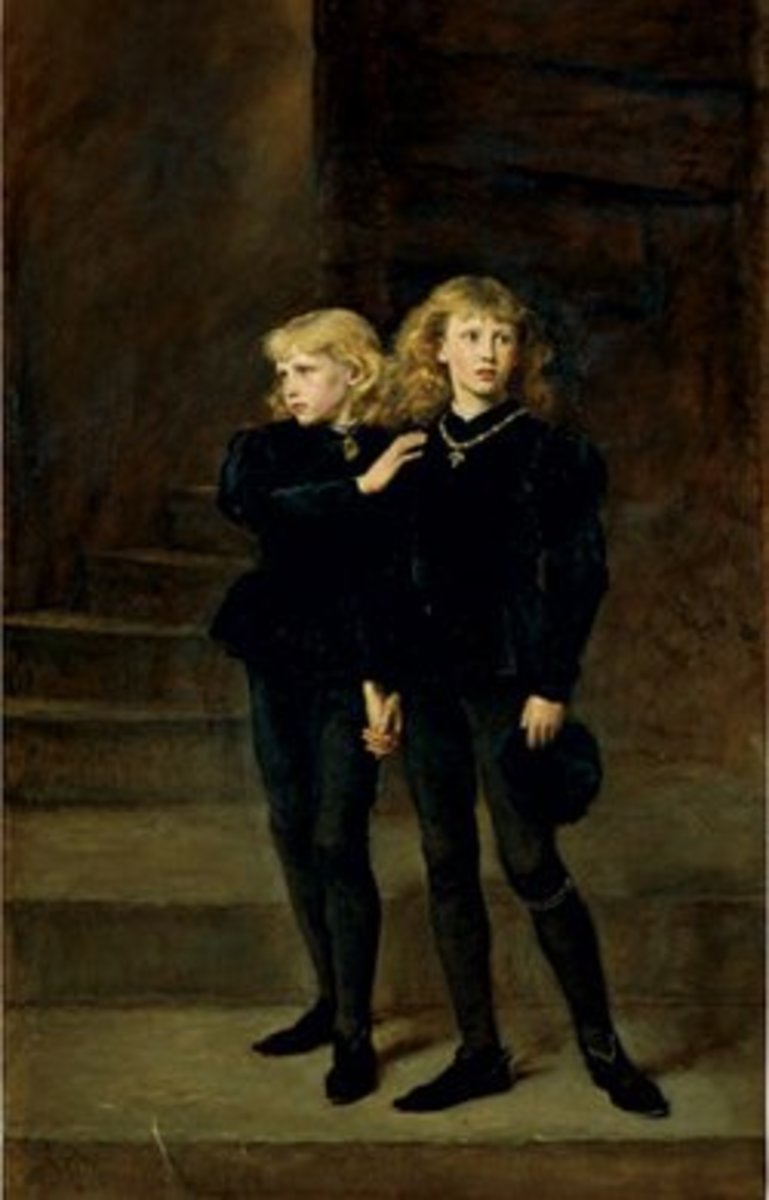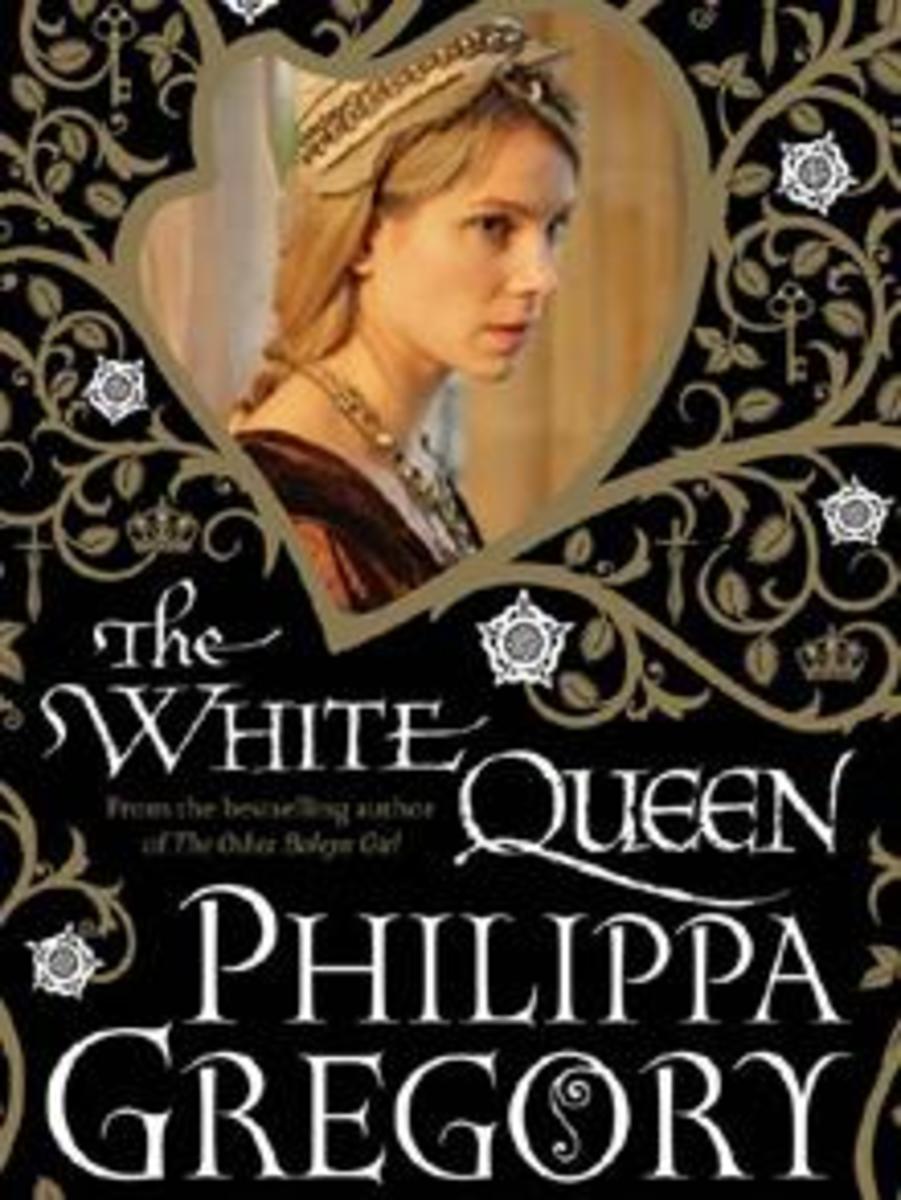Penman’s and Shakespeare’s Richard III
![Movie poster for Richard III by Vanjagenije at en.wikipedia (IMP Awards) [Public domain], from Wikimedia Commons Movie poster for Richard III by Vanjagenije at en.wikipedia (IMP Awards) [Public domain], from Wikimedia Commons](https://usercontent1.hubstatic.com/7004044.jpg)
Mark Twain once said that “the very ink with which history is written is merely fluid prejudice” (BrainyQuote). If this is indeed the case, then we can also assume that some fictional history is also written with prejudice. But which is true to the events and people, and which is not? Shakespeare’s play, Richard III and Sharon Kay Penman’s The Sunne in Splendor present opposing views of Richard III, and both were obviously written to please their audiences. So which gives the true view, and which is written with prejudice?
Shakespeare’s Richard III was written during the reign of the Tudors, the line that was responsible for Richard III’s deposition and death. Because of this, it is easy to assume that it was written to please the current monarch, and thus must have be written more negatively than the truth, as anything that made Richard III into a hero would not have been welcomed. It is clear that Richard III is a true villain, with everything from his physical deformities (meant to show him as “twisted”) to his disturbed mind. The Richard III of Shakespeare is bent on destroying goodness and love, and is out to take things by force or by subterfuge. He pretends to be an honest, simple man, but in the background he is constantly scheming to become King and take the throne first from his brother, and then from his nephews. He is bent on taking what doesn’t belong to him, and is, in fact, a better actor than most who have played him on stage and screen if he was able to carry off all that Shakespeare credits him with doing.
Sharon Kay Penman’s The Sunne in Spendor, however, was written hundreds of years after Richard III’s death. Obviously, it does not need to please those who would have an axe to grind with the House of York. It is written as a diametric opposite of Shakespeare’s play, with Richard III being a pleasant, loving, normal human being who is merely overwhelmed by a situation not of his choosing. Richard III is a loving, kind man who does the best he can for his brothers, his true love, his mother, and anyone else he happens across, including his two known bastard children and the mistresses that he had before his marriage. He’s a family man, a brave and valiant fighter, and while not traditionally handsome, still attractive enough in his own right.
On the side of Sharon Kay Penman are the current “revisionist” historians. They have many arguments, including the following concepts. Richard III was actually wanted as King by many at the time he took the crown, based on the fact that having Edward’s children rule would be bad because they were either illegitimate, or just unwanted because of the problems associated with past boy kings. Richard III’s treatment by those he governed in the North also give credence to the revisionist view. To have garnered such support and loyalty, and to bring “order and justice to an unruly region” and establish “an admirable record of public administration” (Potter, 1989), Richard III could not have been a weak or evil man.
The majority of the information about Richard III that has been accepted into public thought was written by Thomas More, William Shakespeare, and Francis Bacon. These three men are completely unreliable for several reasons. Thomas More was only six years old at the time of Battle of Bosworth. It would have been difficult for him to truly understand what was going on at the time at that age. Most of his writing was used to help the Tudor ascension to the throne, which was somewhat precarious at the beginning of Henry’s reign, since at the time there were over twenty other people who had better claims to the throne than he had. Shakespeare and Bacon were both writing for a Tudor-based crown.
On the side of Shakespeare are sources that seem unable to back up most of what they state as truth and fact. While Polydore Vergil claims that Richard III murdered Edward, the Lancastrian Prince of Wales, there is no evidence to show that it happened that way. Likewise, while Vergil and Thomas More both place the blame for Henry VI’s death on Richard III, most modern historians believe that even if Richard III was in fact the one to bring about the death, it was done on orders by Edward, the current reigning King. Thomas More also blames Richard III for the death of his brother, George of Clarence. Again, there is no evidence that bears it out, other than the fact that More said it. Finally, there is the claim that Richard III forced his marriage with Anne Neville against her will, and then poisoned her when she became inconvenient. John Rous even goes so far as to accuse Richard III of locking up Anne’s mother for the duration of his life. Again, there is absolutely no evidence to bear those claims out. While the marriage might not have been a love match, there was no proof that Anne and Richard were not happy once they were married, and as there are no scandals or mistresses that were ever brought to light – even by those who claimed all the rest of Richard III’s evils – we can assume that they probably did not exist. As for the claim of poison, another work at the time, the Crowland Chronicle, says that the doctors advised Richard III to stay away from his wife’s bed, which implied possible tuberculosis.
The Crowland Chronicle is, in itself, another important piece of the puzzle about Richard III. It is an anonymous work, although some believe the writer was a secular cleric at the Benedictine abbey where it was written. While the writer does not disguise his dislike for Richard III, he does a few things that seem to make the revisionist position stronger. He does include some things that appear completely untrue – such as claiming that Richard III, while he does fall “in the field like a brave and most valiant prince” (Richard III Organization) at Bosworth, actually was the one being attacked by Henry Tudor, as opposed to the other way around. Since he is the only recorded historian to make this claim, it has been dismissed. The true importance of this piece, however, is in the fact that it does not hold Richard III responsible for the murder of his nephews – in fact, it never even mentions that they are dead! This seems to be quite an oversight, and if the writer was so against Richard III, it would have been something that would, and should, have been included. The lack of it seems to show that it was not commonly accepted, and probably not even hinted at.
The portraits of Richard III have also been held to scrutiny. While some clearly show the hunchbacked, deformed wretch in Shakespeare’s play, others show something quite different. Because of the new abilities that have gained by technological advances, it is possible to tell that a number of Richard III’s portraits have been retouched and changed over time. A portrait that is housed in the Royal Collection seems to be the image that many others are derived from, but it was not painted until sometime during the reign of Henry VIII, and it was altered shortly after being painted in order to include a humpback, tight lips, and half-closed eyes, much more in line with the villain that Richard III was supposed to be. Another portrait shows Richard, as Shakespeare described him, bearing a broken sword. While it was painted around 1550, it also had been retouched, removing a shortened arm, but keeping its humpback. It can’t be argued that Richard III was a handsome man, but the majority of the untouched paintings do show a much different man than those that have been made to agree with later Tudor historians.
Which is the truth? It’s almost impossible to say with any certainty, but it may lie somewhere in the middle of the two views. Richard III may not have been all villain, but he may also have not been all hero. He was a human being, and as such, probably wavered in the middle of the two opposite ends, doing what he could to survive in a difficult time.
It is interesting to note, however, that when the Trial of Richard III was created for London Weekend Television, the jurors found Richard III not guilty. Their reasons are the same reasons that seem to resound in any of the historical fiction, and even within the nonfiction, that argues Richard III’s innocence and goodness. First was that the jurors felt that if the princes had been killed, it was quite possible that it was done without Richard III’s knowledge or approval. Second was the lack of any direct accusations against Richard III, just hearsay. Third was Richard III’s general conduct – hardly conduct that would make him fit the traditional villain role that was thrust upon him so often. Fourth was Edward’s pre-contract with Eleanor Butler which would have kept Edward’s children from being heirs to the throne. Fifth was the lack of enquiry by Henry Tudor, something that meant quite a lot in that if Henry didn’t investigate Richard III, there was a good chance that there was nothing there; Henry could have greatly benefited from being able to place more blame on Richard III’s shoulders. Sixth and finally, the jurors felt that the information being brought against Richard III was either distorted and/or biased against him.
Regardless of who the true Richard III is, he still manages to fascinate. Numerous authors, including Margaret Campbell Barnes (The King’s Bed), Rosemary Jarman (We Speak No Treason), Francis Leary (Fire and Morning), Gladys Malvern (The Queen’s Lady), Marian Palmer (The White Boar), Josephine Tey (Daughter of Time), Marguarite Vance (A Song for a Lute), and Robert Farrington (The Killing of Richard the Third), have all written historical fiction about Richard III and Anne Neville. While most are pro-Ricardian, some follow the more traditional Shakespearian view. Some modern authors, like Elizabeth Peters in her The Murders of Richard III, manage to use the arguments over the true Richard as the pretext for a modern mystery novel, quoting information within the novel that shows the author’s belief in the revisionist Richard view.
While it may not be possible to find out the absolute truth of the matter, the fact that this argument exists today tells us that people are interested in finding out what really happened, and with current abilities, some day we might have the answers as more and more facts and information come to light.
Works Cited
Barber, Charles. York Notes on William Shakespeare’s Richard III. New York: Longman, 1981.
BrainyQuote. Mark Twain Quotes and Quotations. 2004. 14 May 2004. <http://www.brainyquote.com/quotes/quotes/m/marktwain105745.html>
Drewett, Richard and Redhead, Mark. The Trial of Richard III. Based on the London Weekend Television Production for Channel 4. Glouster: Alan Sutton, 1984.
MSN Groups: Edward the Fifth. Selected Bibliography. 14 May 2004. <http://groups.msn.com/EdwardtheFifth/selectedbibliography.msnw>
Penman, Sharon Kay. The Sunne in Splendor. New York: Ballantine Books, 1990.
Penman, Sharon Kay. “On Reshaping History.” The Richard III and Yorkist History Server. Winter 97/98. 14 May 2004. <http://www.r3.org/fiction/roses/penman.html>
Peters, Elizabeth. The Murders of Richard III. New York: Mysterious Press, 1986.
Pollard, A.J. Richard III and the Princes in the Tower. New York: St. Martin’s Press, 1991.
Potter, Jeremy. Good King Richard? An Account of Richard III and his Reputation. London: Constable, 989.
Richard III Society. To Prove a Villain…the real Richard III. (Exhibition at the Royal National Theatre, London, March 27-April 27, 1991.) 2003. 14 May 2004. <http://www.r3.org/rnt1991/introduction.html>
Shakespeare,William. Richard III. Ed. by Mark Eccles. New York, Signet Classic. 1988.
Suter, John. MLA 5322 Notes on The Sunne in Splendor. Houston: Master of Liberal Arts Program, 2004.

![Richard III [DVD]](https://m.media-amazon.com/images/I/51X9GHH7Y8L._SL160_.jpg)







